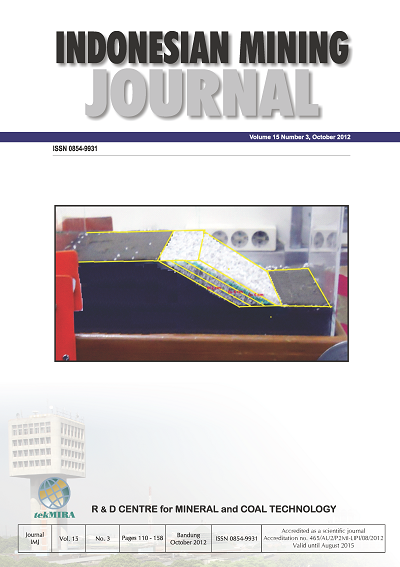EFFECT OF COMBUSTIBLE CONTENT IN COAL ASH REFUSE ON THE EFFICIENCY OF THERMAL OIL HEATER SYSTEM
DOI:
https://doi.org/10.30556/imj.Vol15.No3.2012.449Keywords:
coal characteristics, combustibles in ash, combustion efficiency, indirect methodAbstract
This paper provides an analysis on the effect of combustible content in coal ash refuse the efficiency towards combustion and heat thermal oil heater system in a coal furnace that had been studied. The study investigated the discrepancy of the actual performance of the heater compared to that as stated in the design specification. The study assumed that coal type and operational problem were the cause of deviation. Both affect combustion efficiency and the amount of reactive materials within coal ash refuse. Combustible content within the coal ash refuse was the used as the source data. Using indirect method, the amount of losses can be determined from the amount of combustibles in the coal ash refuse. The work involved measuring the temperature of oil and flue gas, analyzing the ash content and calculating the losses based on two sets of operational data. System efficiency and heat exchanger rating were calculated by reducing the amount of total losses from the full design capacity. If the reactive composition within the coal ash in combustible content, the amount of coal consumption is higher in order to attain the heat desired capacity for heating. Such a contition is caused by decreasing the energy capacity and reducing the furnace effectivenessReferences
Bahadori , A., and Vuthaluru , H.B., 2010. Estimation of energy conservation benefits in excess air controlled gas-fired systems, Fuel Processing Technology, Volume 91, Issue 10, October 2010,
Pages 1198–1203.
British Standard BS 845-1:1987. Methods for assessing thermal performance of boilers for steam, hot water and high temperature heat transfer fluids, BSI.
Huang, Y., McMullan, J.T. and Williams, B.C., 2000. Influences of coal type on the performance of a pressurised fluidised bed combustion power plant, Fuel, Vol. 79, p. 1595-1601.
Jaasma, D.R., Shelton, J.W., and Graeser, L., 1991. Sensitivity study of traditional flue loss methods for determining efficiencies of solid fuel heaters, Bio- mass and Bioenergy, Vol. I, No. 3, pp. 149-162.
Ji, J.J., Luo, Y.H. and Hu, L.Y., 2008. Study on the mechanism of unsteady combustion related to volatile in a coal-fired traveling grate boiler, Applied Thermal Engineering, Vol. 28, p. 145–156.
Kouprianov, V.I., 2001. Modeling of thermal character- istics for a furnace of a 500 MW boiler fired with high-ash coal, Energy 26, p 839–853.
Pis, J.J., Fuertes, A.B., Artos, V. and Rubiera, F., 1991. Prediction of combustion efficiency in a fluidized bed combustor by statistical experimental design, Fuel, Vol 70, July, p. 861-864.
Redemann, K., Hartge, E.U. and Werther, J., 2008. Ash management in circulating fluidized bed combus- tors, Fuel 87, p. 3669–3680
Sathyanathan, V.T., 2011. Predicting combustibles in pulverized coal fired boilers - fly ash and bot- tom ash, http://www.brighthubengineering.com/ power-plants/.
Smith, J.D., Spence, T.T., Smith, P.J., Blackham, A.U. and Smoot, A.D., 1988. Effects of coal performance qual- ity on utility furnace, Fuel, Vol 67, January 27.
Suyadal, Y., 2006. Thermal inefficiency model for deter- mination of the bed-to-gas heat transfer coefficients with effectiveness factor in a fluidised bed, Fuel Processing Technology, Vol. 87, p. 539–545.
Walsh, P.M., Dutta, A., Cox, R.J., Sarofim, A.F. and Beer, J.M., 1988. The production and loss of char fines during fluidized bed combustion of a high volatile bituminous coal, Twenty-Second Sympo- sium (International) on Combustion/The Combus- tion Institute, pp. 249-258.
Downloads
Issue
Section
License
Indonesian Mining Journal provides immediate open access to its content on the principle that making research freely available to the public to supports a greater global exchange of knowledge.

This work is licensed under a Creative Commons Attribution-NonCommercial 4.0 International License.













